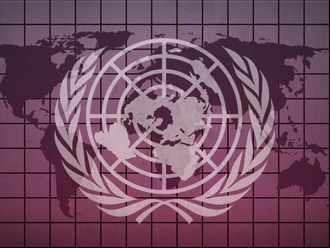
On May 1, Faisal Shahzad, a Pakistani-born American citizen, attempted to set off a car bomb in New York City's Times Square. The Pakistan Taliban, Tehrik-e-Taliban Pakistan (TTP), claimed responsibility for the attack shortly afterwards, but US intelligence agencies dismissed the idea. Neither the Afghan nor Pakistani branches of the Taliban had struck outside their own territories before.
I was fairly certain, however, that this was not only a demonstration of the increasing reach of the Al Qaida-Taliban nexus, but an advertisement of their common cause.
A few days before the attack, Hakimullah Mehsud, the TTP leader who US commanders claim to have killed in a drone attack, had posted threats against American cities on the internet, citing revenge for the slaying of his predecessor Baitullah Mehsud.
The YouTube account on which the pre-recorded claim by TTP explosives expert Qari Hussain Mehsud was posted had been created the day before the bombing specifically for that purpose.
The TTP is a major force with an estimated 40,000 to 80,000 fighters. It was formed in 2007 as an umbrella for several groups and has close ties to organisations such as Lashkar-e-Taiba, implicated in the 2008 Mumbai atrocities.
Al Qaida's link with the Afghan Taliban, under Mullah Omar, became a formal alliance in 2007; the inclusion of the TTP was not far behind.
The three groups have carried out several joint attacks. The most serious against US interests to date was the December 31, 2009 suicide attack on the CIA base in Khost, Afghanistan, in which seven US and one Jordanian intelligence agents were killed (including America's top Al Qaida expert). Al Qaida and both branches of the Taliban claimed the bombing, not out of any confusion but to underscore a highly sophisticated, well-planned intelligence and logistical collaboration.
The Jordanian perpetrator, Dr Humam Khalil Al Balawi, left a clue to the Times Square plot in his video-taped will when he talked of immigrant fighters hosted by the TTP. The previously nationalist entity with a Pakistan-centric agenda was transforming into a multi-national one, looking increasingly outward.
Al Qaida is providing an ideological cement that binds extremists from various backgrounds and with different agendas. That this comprises a global vision and foreign targets is particularly worrying for the West.
Al Qaida itself has had a strong presence and training camps in Pakistan since 2001, when it was forced to flee the US bombardment of Osama Bin Laden's Tora Bora headquarters in revenge for 9/11.
At least two of the four London suicide-bombers who killed 52 on July 7, 2005, had recently returned from an Al Qaida camp in Pakistan. Failed plots targeting the UK in 2006 and 2007 also had Pakistan connections.
By claiming the Times Square bombing, the TTP (prompted, conceivably, by Al Qaida) is widening the allies' recruitment net to include disenfranchised American-Asians who, like British Asians, are mostly of Pakistani origin, having less in common — culturally and linguistically — with the Arab-dominated Al Qaida organisation.
Al Qaida itself has been targeting western recruits — who now constitute up to 10 per cent of its membership — for several years. Azzam Al Amriki (aka Adam Ghadan), a US national who was born Adam Pearlman, is a prominent spokesman for the organisation. Bryant Vinas, another American citizen, pleaded guilty in late 2008 to trying to blow up a US commuter train and confessed that he had trained with Al Qaida.
Bekkay Harrach, nom de guerre Al Hafidh Abu Talha Al Almani, is a young German who has appeared in several videos threatening his native country (in German) and urging his countrymen to join him in extremism.
Threat from within
Shahzad was typical of the ‘home-grown' terrorist western intelligence agencies so rightly fear. Living the American dream with a wife and two kids, he was described by neighbours as ‘a normal kind of guy'. He left the US for Pakistan in September 2009, returning five months later without his family and on a deadly mission.
Others, too, have recently struck at the heart of their adopted country. On June 1, 2009, Memphis-born Abdul Hakim Mohammad shot one soldier dead and wounded another, describing himself at his trial as ‘a soldier for Al Qaida'. On November 5, 2009, US army officer Major Nidal Malik Hasan gunned down 13 soldiers, wounding 30 more, at Fort Hood in Texas.
In another twist, these three attackers had each encountered US-born Imam Anwar Al Awlaki, who moved from the US, via London, to Yemen in 2004. Closely linked to Al Qaida in the Arabian Peninsula (AQAP), many suspect his ties to the wider organisation pre-date 9/11.
Al Awlaki is also believed to have hosted the ‘underpants bomber' Nigerian Umar Farouk Abdul Mutallab in Yemen shortly before he attempted to blow up a plane full of people over Detroit on Christmas day, 2009.
With his excellent American-English and western provenance, Al Awlaki bridges the gap between Al Qaida and its potential ‘foreign' foot soldiers. Al Awlaki has also developed a strong presence on the internet, often via AQAP sites. Shahzad told investigators that he had been ‘inspired' by Al Awlaki's powerful online lectures urging young Muslims to take up extremism.
Unlikely as it seems, the US may be home to many like Shahzad. A Pew survey last January found that only 36 per cent of Asian-American Muslims had a ‘very unfavourable' view of Al Qaida.
In March, Al Awlaki posted an online broadcast that included this chilling sentence: "Jihad is becoming as American as apple pie and as British as afternoon tea".
- Abdel Bari Atwan is editor of the pan-Arab newspaper Al Quds Al Arabi.











